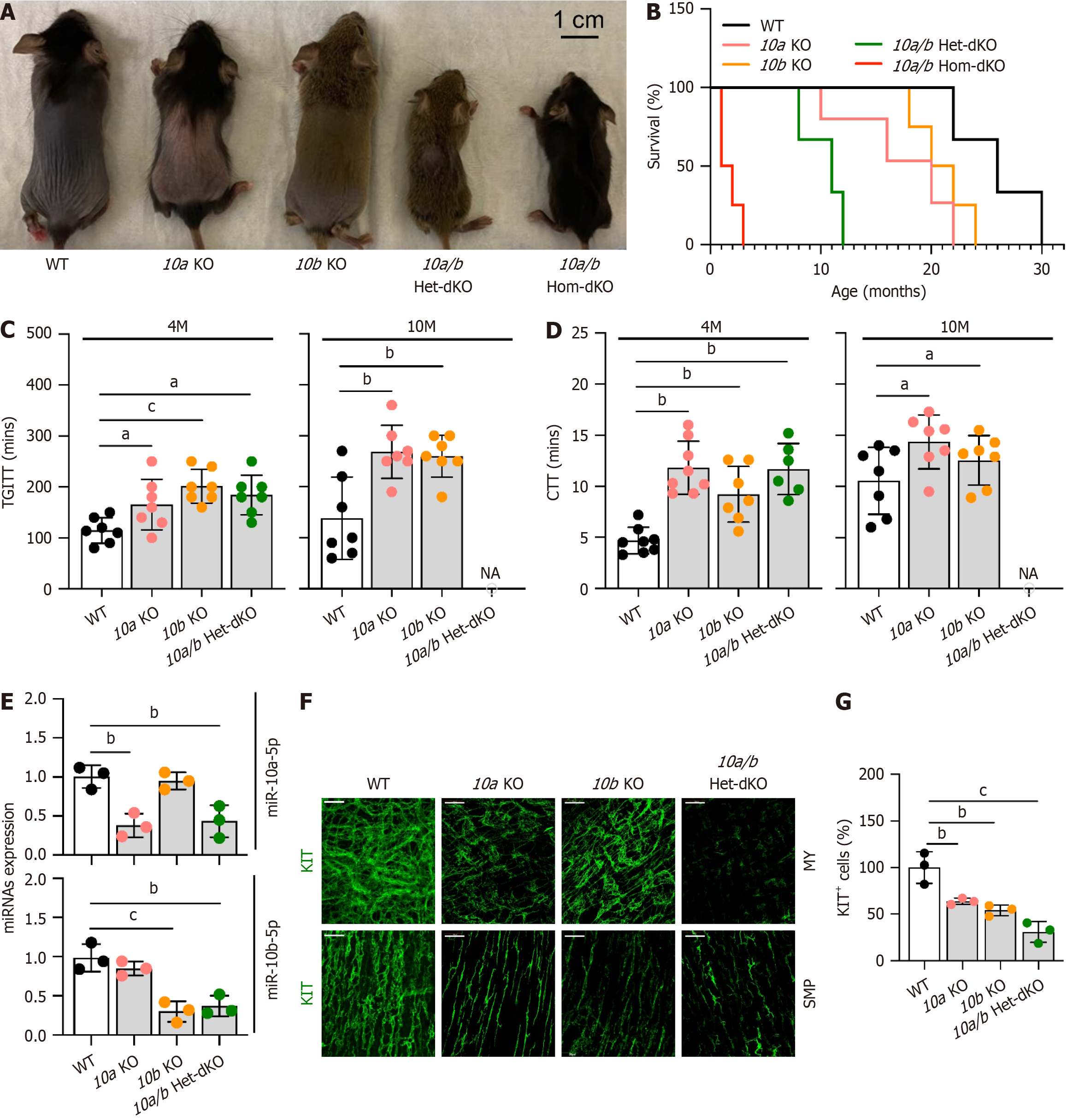Copyright
©The Author(s) 2025.
World J Gastroenterol. Jun 28, 2025; 31(24): 104437
Published online Jun 28, 2025. doi: 10.3748/wjg.v31.i24.104437
Published online Jun 28, 2025. doi: 10.3748/wjg.v31.i24.104437
Figure 3 mir-10a and/or mir-10b knockout mice develop gastrointestinal dysmotility with a substantial reduction in interstitial cells of Cajal.
A: Gross image in mir-10a knockout (KO), mir-10b KO and mir-10ab double heterozygous knockout (Het-dKO) and homozygous (Hom-dKO) mice; B: Survival percentages of mir-10a KO, mir-10b KO, mir-10ab Het-dKO, and mir-10ab Hom-dKO mice (n = 7-10, mir-10a, mir-10b KO, and wild-type (WT); n = 5, mir-10ab Het-dKO; n = 4, mir-10ab Hom-dKO); C and D: Total gastrointestinal transit time and Colonic transit time at 4-month and 10-month-old age in WT, mir-10a KO, mir-10b KO, and mir-10ab Het-dKO mice. n = 6-8 per group; E: Expression levels of miR-10a-5p and miR-10b-5p in the proximal colonic smooth muscle in WT, mir-10a KO, mir-10b KO, and mir-10ab Het-dKO mice, as measured by qPCR. n = 3 each group; F: Whole-mount confocal images of interstitial cells of Cajal (ICC) (KIT+) cells in submucosal plexus (SMP) and myenteric plexus layer (MY) ICC in proximal colonic smooth muscle in WT, mir-10a KO, mir-10b KO, and mir-10ab Het-dKO mice. Scale bars were 50 μm; G: Quantification of KIT+ cells in panel F, presented as a percentage of the total across both MY and SMP layers. n = 3 per group. Error bars indicate SEM, 1-way ANOVA. aP < 0.05; bP < 0.01 and cP < 0.001; TGITT: Total gastrointestinal transit time; WT: Wild-type; KO: Knockout; CTT: Colonic transit time; NA: Not available; MY: Myenteric plexus; SMP: Submucosal plexus.
- Citation: Baek G, Singh R, Ha SE, Cho H, Padmanabhan S, Vishwanath V, Kim MS, Seon D, You J, Lee MY, Ro S. miR-10a-5p and miR-10b-5p restore colonic motility in aged mice. World J Gastroenterol 2025; 31(24): 104437
- URL: https://www.wjgnet.com/1007-9327/full/v31/i24/104437.htm
- DOI: https://dx.doi.org/10.3748/wjg.v31.i24.104437









